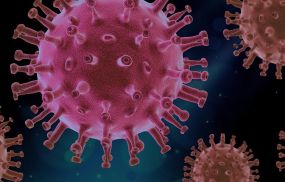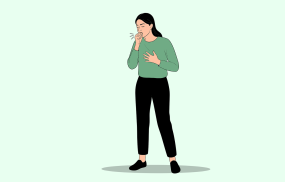Healthy Living Stories

Common Itchy Throat Causes: Allergy Symptoms vs Viral Infection and Dry Air
Discover common itchy throat causes and how to tell allergy symptoms from a viral infection, plus when persistent throat itch might signal dry air or something more serious. 
Swollen Lymph Nodes Causes Beyond Infection: 5 Serious Illness Signs You Can't Ignore
Learn when lymph node swelling signals serious illness signs beyond infection. Explore swollen lymph nodes causes, red flags, and when to seek help for timely diagnosis. 
Constant Nausea All Day? What Doctors Check First for Nausea Causes and Hidden Digestive Disease
Constant nausea may signal digestive disease or systemic issues. Learn what doctors check, key nausea causes, tests, and red-flag symptoms requiring urgent evaluation. 
Understanding Climate Health Risks: How Rising Temperatures Impact Human Health
Explore how rising temperatures increase climate health risks and affect global warming health, from heat illnesses to disease spread and mental health challenges worldwide. 
Why Food Poisoning Cases Spike in Hot Months: The Shocking Science of Bacterial Growth in Heat
Learn why food poisoning causes spike in hot months due to bacterial growth heat. Explore science, symptoms, and prevention for safe summer eating. 
Screen Time Mental Health: Understanding Digital Brain Changes in Kids vs. Adults
Explore how screen time impacts mental health and digital brain changes differently in kids and adults, with practical tips for balanced, healthy screen use. 
Early Disease Signs and Warning Symptoms People Often Ignore: Why Recognizing Them Could Save Your Life
Discover common early disease signs and warning symptoms people often ignore and learn why recognizing them early is vital for preventing serious health issues. 
Why Seasonal Disease Spread Follows Predictable Epidemiology Cycles (And How to Spot the Next Outbreak)
Discover why seasonal disease spread follows predictable epidemiology cycles, from flu winters to dengue monsoons. Uncover patterns, causes, and prediction strategies for smarter outbreak prevention. 
Why Do Your Hands Shake? Hand Tremors, Shaking Hands Causes & Tremor Symptoms Explained
Understanding why hand tremors happen: from anxiety-induced shaking hands causes to essential tremor symptoms. Learn triggers, differences from Parkinson's, and when to seek help. 
Sharp Pain When Breathing? Unmasking Pleurisy Symptoms and Lung Infection Signs
Discover why pain when breathing signals pleurisy symptoms or lung infection signs. Learn causes, symptoms, and urgent steps for relief and prevention. 
What Causes Male Hot Flashes? Low Testosterone Symptoms and Hormonal Imbalance in Men Explained
Male hot flashes often stem from low testosterone symptoms and hormonal imbalance in men. Learn medical causes, risk factors, and when to seek hormone evaluation. 
The Hidden Dangers of Keto Diet: Low Carb Risks and Ketogenic Diet Safety Explained
Keto dieters face real risks ranging from keto flu to kidney stress and nutrient deficiencies. Learn key keto side effects, low carb risks, and essential safety tips. 
Goiter Symptoms and Enlarged Thyroid Signs: Swelling Warning Signals You Shouldn't Miss
Understand goiter symptoms, enlarged thyroid signs, and thyroid swelling causes you might miss. Learn subtle indicators, risks, and when to seek help for early thyroid health management. 
Chronic Back Pain Causes: Understanding Spinal Pain and Nerve Pain Symptoms
Discover chronic back pain causes: spine, muscles, or nerves? Learn spinal pain signs, nerve pain symptoms, diagnosis, and treatments for lasting relief. 
Easy Bruising Causes: Why Vitamin Deficiency and Blood Disorders Make You Bruise Easily
Understand the most common easy bruising causes, from vitamin deficiency bruising to blood disorder signs, and learn when symptoms require medical attention.



























